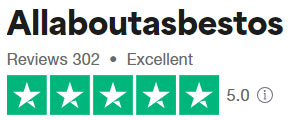This website uses cookies so that we can provide you with the best user experience possible. Cookie information is stored in your browser and performs functions such as recognising you when you return to our website and helping our team to understand which sections of the website you find most interesting and useful.
About Asbestos
London, Kent & South East Asbestos Survey and Remediation Experts.
About Asbestos
Asbestos is the name for several silicate minerals which are highly fibrous with separable long thin fibres. Asbestos fibres are strong and flexible, having a tensile strength far greater than steel, yet flexible enough to be spun and woven.
Asbestos has been widely used for many applications making it useful for a number of industrial and commercial uses. Although now illegal in the building and construction industry asbestos was in the past used in large quantities in both the construction and refurbishment of buildings.
Today, much of this can still be found and if in good condition and undisturbed, poses little threat. The only time this can become a health hazard is if the asbestos is in poor condition or is disturbed thus releasing fibre particles into the atmosphere which could then be inhaled.
The Two Main Groups Of Asbestos
Serpentine (Chrysotile – white asbestos)
Mineral or rock consisting mainly of the hydrous silicate of magnesia.
Amphibole
A group of minerals with similar crystal structures containing a silicate chain and combinations of chiefly sodium, calcium, iron and aluminium.
The Common Types Of Asbestos Minerals
Asbestos is the biggest occupational health killer in the UK. All asbestos is a class 1 carcinogen (cancer forming) material.
Asbestos becomes a problem when it is disturbed and releases fibres. When these microscopic fibres which can be up to 2000 times thinner than a human hair are released into the atmosphere and inhaled, they can become lodged deep within the lining of the lungs and in some cases work their way through that lining.
The common types of asbestos minerals are:
- Chrysotile (White Asbestos)
- Amosite (Brown Asbestos)
- Crocidolite (Blue Asbestos)
- Anthophylite
- Tremolite
- Actinolite
London, Kent & South East Asbestos Survey and Remediation Experts.
Call Us Today For A Free Quotation: 01843 600765
Asbestos Exposure Types
Asbestosis
This is scaring (fibrosis) of the lung tissues, usually a disease contracted by exposure to asbestos dust.
Mesothelioma
This form of cancer affects the membranous linings of the chest and abdomen and can take between 15 – 60 years to develop. It is usually associated with exposure to blue asbestos. It is currently estimated that up to one in 100 men now in their 50s will die of mesothelioma.
Lung cancer
People who get asbestosis may also develop bronchial cancer, although lung cancer is not necessarily preceded by asbestosis. Smoking greatly increases the risk.
Asbestos Containing Materials
- Thermal Insulation – Boiler and pipework insulation and heat shields etc.
- Sprayed Coatings – Such as insulation, sound proofing and fire protection coatings, profile sheet coatings, paper coatings on fibre board.
- Asbestos Insulation Boards (AIBs) – such as ceiling/wall panels, fire breaks, door panels and soffit boards.
- Asbestos Cement – Including corrugated roof sheets, boiler flues, air brick connecting pieces, bath panels, water tanks and many more.
- Asbestos Textiles – For items like Fire blankets, fire curtains, gloves, boiler gaskets and cable sheathings etc.
- Flooring products – Like vinyl floor tiles, asphalt floor tiles, promenade tiles and paper tile backings.
Other Products – Including toilet cisterns, sink pads, roofing felts, stair treads, damp proof courses, mastics and paints.

